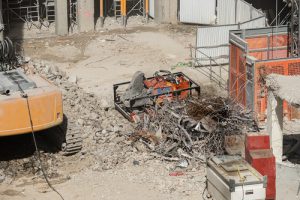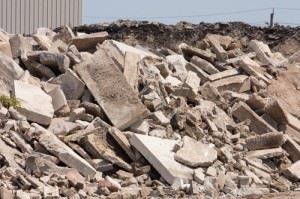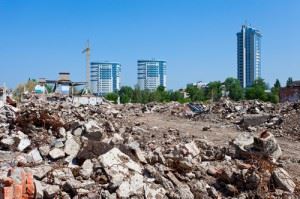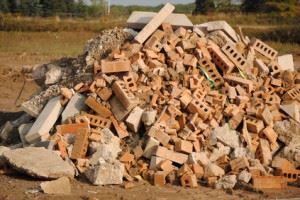The construction industry is among the fastest-growing ones worldwide currently. There seems to be no shortage of new buildings coming up to meet the needs of an ever-growing market. Though profitable, the construction industry generates a considerable amount of waste. When you consider the work handled in the sector, the amount of waste generated makes sense.
However, when running a construction company, it is essential to ensure your activities have as minimal an impact on the environment as possible. This means investing in professional construction waste management. While it sounds like an expensive option for handling your waste, it protects you from the high penalties of indiscriminate waste disposal and places your company among those that are eco-conscious, a key selling point for brands nowadays.
The first step in proper waste management is categorizing waste. This ensures you employ the right disposal methods and protect the people on your site from the effects of some toxic substances. Below are the categories of construction waste.
Building materials
These are, understandably, the leading ones on construction sites. There will always be building materials to handle, irrespective of whether your company is handling a remodeling, restoration, demolition or basic construction project. The common building materials you will come across include wiring, rebar, wood, plaster, cement, scrap metal, bricks, wiring and nails. These are often turned into waste because they are damaged and unrecyclable.
The disposal of building materials is relatively basic, but construction waste management companies still follow laid-down procedures to guarantee they do it right. Bricks, cement and plaster are sometimes broken down for use in future construction projects. This is quite beneficial because it lowers the cost of new building materials.
Dredging materials
These are the materials removed from a construction site when preparing it for a project. They usually include rocks, tree stumps, dirt and trees. Though not considered dangerous, professional construction waste management companies who will ensure the proper disposal of dredging materials should still collect and dispose them off. You can reuse some waste like the wood from uprooted trees and the rocks in your construction project.
Demolition waste materials
Some construction waste types are primarily found in demolition projects. To ease their understanding and ensure their proper handling, this waste is sub-categorized into waste, asbestos and non-asbestos materials. Asbestos increases the risk of people contracting lung cancers and respiratory conditions when inhaled. It can generate minute flakes that are easily inhaled. In demolition sites, you primarily find asbestos in insulation.
Non-asbestos-containing materials in demolition sites include ceramics, tiles, bricks and concrete. While the rest are rarely recycled, you can re-use reinforced concrete to make new concrete so that you lower the expenses of a new project. Consider crushing this on site to negate the costs of transporting the concrete from your site and back.
Demolition waste materials include wood, plastic, and glass. Plastic forms the highest amount of waste in demolition sites because it is mixed into most materials used in construction. Some of the plastic types you will handle in your site include PVC siding, PEX pipes, and Styrofoam.
Hazardous waste
You should be well-equipped to identify and handle hazardous waste in your construction site to protect the people on and around it. The most common hazardous waste in construction is attributed to plasterboard, strippers, paint thinners, fluorescent bulbs, mercury bulbs, aerosol cans and lead. There are strict regulations on the management of hazardous construction waste in different jurisdictions. If you do not adhere to these measures, your company risks exposing the environment and people to the dangerous toxins in your construction waste.
Treated materials with hazardous substances
Most construction projects use treated plastics, wood and glass to maximize buildings’ longevity. They also use bituminous mixtures containing a hazardous substance called coal tar. Metals like tins, brass, iron, steel, aluminum and bronze might be classified as non-hazardous but some of the components added to them to boost their efficacy in construction make them hazardous. The most common examples of this are cables that contain tar, coal or oil.
Something might also contaminate the soils in your construction site with hazardous substances. A routine soil test before construction might point to asbestos fragments. To guarantee the treated materials in your construction site are handled well in case of contamination, invest in testing procedures before starting your project.
By categorizing your construction into one of the above groups, you will be well-placed to handle it appropriately. Like most businesses, you might look for a way to minimize your construction waste management expenses. Some construction companies opt to have an in-house waste management category. While this sounds feasible at first, there are multiple expenses that you will factor in with this approach. Partner with a professional construction waste management company like Junk-King Marin that will pick and safely dispose of the waste. The company has a broad price range that suits all construction budgets.
 Text Us
Text Us




 Although regular concrete is a relatively eco-friendly construction material, modern concrete production processes often utilize energy and raw materials. Reusing existing concrete material to update your landscaping is an eco-friendly move as it both saves energy and keeps the old materials out of landfills.
Although regular concrete is a relatively eco-friendly construction material, modern concrete production processes often utilize energy and raw materials. Reusing existing concrete material to update your landscaping is an eco-friendly move as it both saves energy and keeps the old materials out of landfills. Broken concrete can be put in various uses, including;
Broken concrete can be put in various uses, including; Broken Concrete Give Away
Broken Concrete Give Away There is a universal culture that government authorities seek to embed in a bid to conserve space and the environment due to the upsurge in greenhouse effects, ozone layer depletion, and climate change. These are the long-term effects of illicit dumping and inappropriate debris removal. For instance, people were fond of the burning of waste in an incinerator before they were ever authorized recycling processes. Research proves that it is a noxious practice that can be hazardous to humans. This is because when you engage in burning domestic items such as aerosol cans and plastic waste they release dangerous gases that deplete the ozone layer over time. Similarly, breathing in their by-products-such as
There is a universal culture that government authorities seek to embed in a bid to conserve space and the environment due to the upsurge in greenhouse effects, ozone layer depletion, and climate change. These are the long-term effects of illicit dumping and inappropriate debris removal. For instance, people were fond of the burning of waste in an incinerator before they were ever authorized recycling processes. Research proves that it is a noxious practice that can be hazardous to humans. This is because when you engage in burning domestic items such as aerosol cans and plastic waste they release dangerous gases that deplete the ozone layer over time. Similarly, breathing in their by-products-such as  Construction waste includes concrete, wood, steel, glass, nails, shingles, and so on. Moving some of these objects can be dangerous. Sharp items can cause cuts and abrasions while heavy-lifting of rubble can lead to back strains.
Construction waste includes concrete, wood, steel, glass, nails, shingles, and so on. Moving some of these objects can be dangerous. Sharp items can cause cuts and abrasions while heavy-lifting of rubble can lead to back strains. You’re unlikely to have as big a problem as the
You’re unlikely to have as big a problem as the 

 Construction waste includes a variety of the different materials left over from remodeling or renovating homes, businesses, or public recreational areas. Often times these materials can be considered hazardous or toxic, whether coming from your home, yard, or various construction sites in the immediate area.
Construction waste includes a variety of the different materials left over from remodeling or renovating homes, businesses, or public recreational areas. Often times these materials can be considered hazardous or toxic, whether coming from your home, yard, or various construction sites in the immediate area.